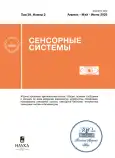Vol 39, No 2 (2025)
ОБЗОРЫ
Development of computer methods in binocular treatment of strabismus and amblyopia
Abstract
Computer methods were introduced into the practice of strabismus and amblyopia treatment in the 1990s. In Russian ophthalmological institutes, several independent groups of specialists were organized to create interactive computer programs (ICP) for diagnosis and treatment of these binocular vision disorders. This resulted in the emergence of a variety of equipment based on ICPs differing in purpose, technology of left and right image separation, and design. The main factors determining the prospects of these computer methods are achievements of the fundamental researches of the visual system, the results of using ICPs in practice, and technical innovations. However, the realization of this potential is hindered by a number of marketing and social factors that impede the exchange of important information between different groups which develop and use ICPs, as well as the lack of theoretical discussion of the general methodology, methods of ICP optimization, and conditions of using different ICPs. Due to the emergence of fundamentally new data concerning the pathogenesis and treatment of amblyopia and the possibility of successful activation of long-blocked (“dormant”) binocular mechanisms in adult patients, the need to revise the current situation is acutely felt. Opinions regarding the effectiveness of computerized binocular therapy (BT) methods are contradictory: some researchers estimate it very high, while others see little or no specific benefit from BT compared to the traditional methods. In this article, some reasons explaining the lack of consensus are discussed: vague criteria of the methods belonging to the “BT class”, differences in technical implementation of BT, specificity of visual stimuli and conditions of BT application, differences in patient groups and interaction with patients (such as training, instruction, assistance, encouragement, involvement in the choice of working material, etc.). The requirements for adequate expertise of each method and comparative assessment of different methods are discussed.
 3-44
3-44


From rod to cone: functional transformations in the evolution of vertebrate photoreceptors
Abstract
 45-74
45-74


ЗРИТЕЛЬНАЯ СИСТЕМА
Changes in the electroretinogram of compound eyes of the cockroach Periplaneta americana L. upon ocelli shielding
Abstract
The cockroach visual system comprises compound eyes with photoreceptors of two spectral classes and ocelli – simple eyes consisting of green-sensitive photoreceptors. Using the method of non-invasive electroretinogram (ERG) recording from both compound eyes, it was shown that shielding of both ocelli leads to a significant alteration of ERG parameters, namely, an increase in the amplitude of responses to short-wavelength stimuli of saturating intensity and a slowing down of responses to both short-wavelength and long-wavelength light. Ocelli estimating the total light level modulate the functioning of photoreceptors of compound eyes at night, under low-light conditions, by increasing the summation time of light entering the eye to generate a response.
 75-87
75-87


СОМАТОСЕНСОРНАЯ СИСТЕМА
EFFECT OF “DRY” IMMERSION ON THE PERFORMANCE CHARACTERISTICS OF A VISUAL-MOTOR TASK USING A JOYSTICK DEPENDING ON THE DIRECTION OF HAND MOVEMENT
Abstract
Issues related to controlling arm movements in space flight (SF) are extremely important. The success of an operator’s activities depends on the safety of the SF. To study the impact of the SF factor (support unloading), a ground-based “Dry” Immersion (DI) model is used. The study was conducted for 7 days under DI conditions. During the visual-motor task, 10 participants moved the cursor from the center of the screen to randomly appearing peripheral targets using a joystick. The DI effect on cursor movement parameters in four directions was evaluated. There were differences in time and accuracy depending on the hand movement direction in control studies that persisted during and after DI exposure. In the early days of DI, most estimated cursor movement parameters deteriorated, regardless of the direction. By the end of the immersion, they had recovered. The degree of DI influence on cursor movement differed depending on the direction of hand movement, and was most pronounced at the beginning of DI. There was minimal impact of DI on movement from left to right.
 88-99
88-99











